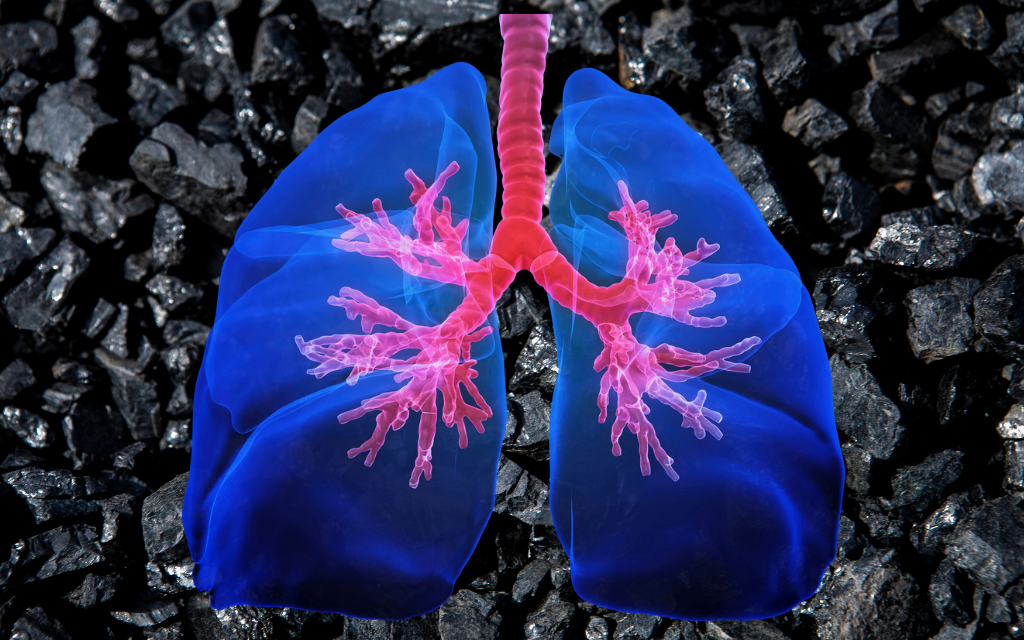
Living in coal country, most of us know someone who has – or, more unfortunately, had – black lung, silicosis, and other respiratory diseases associated with coal mining. Sure, on paper the companies may show compliance with state regulations, but the fact is, more and more miners receive diagnoses of irreversible and progressive lung disease. The amount of coal miners suffering from black lung is the highest it has been in 25 years; it is estimated that 20% of miners in Central Appalachia have the disease, with younger miners being affected at especially high rates.
As coal gets harder to reach, miners are being exposed to more silica dust, which is causing the increase in respiratory diseases. Silica dust is an increasing concern for coal miners due to more sandstone in the seams. The longwall machines deployed in Southwestern PA grind the stone layers and send this very harmful silica dust airborne and miners breathe it in. Experts say silica dust can cause acute silicosis in as little as weeks or months and repeated exposure to the dust drastically increases the likelihood of contracting this lifelong respiratory disease.
Lack of company incentive (that is, clear and progressive fines and punishments) to innovate and to enforce protective measures needs to be addressed. Certified half- or full-mask respirators that do not affect visibility are easy and cheap (for multi-million dollar coal companies) to supply. Coal companies may already ‘require’ respirators, but other than the occasional visit from a mine inspector, it is solely on the company to enforce the rules. The high rates of black lung and silicosis are the result of the current process and forms of enforcement.
This leads us to the next important point: mine inspectors need the ability to test for longer periods, more frequently, and to show up unscheduled and unannounced to help provide a clear picture to miners of exactly what is in the air they breathe. The current practice of planned visits for quick sampling results in a false representation of what miners are exposed to during an entire shift.
What you can do to help
The Mine Safety and Health Administration has proposed a rule that would regulate silica dust in coal mines for the first time. The rule is open for comment through September 11. If you or anyone you know has been affected by a respiratory disease associated with coal mining, we encourage you to submit a comment here.
You can also sign on to this petition to further amplify concerns for miners’ health.
Miners deserve better than what they’ve endured for over a century!

